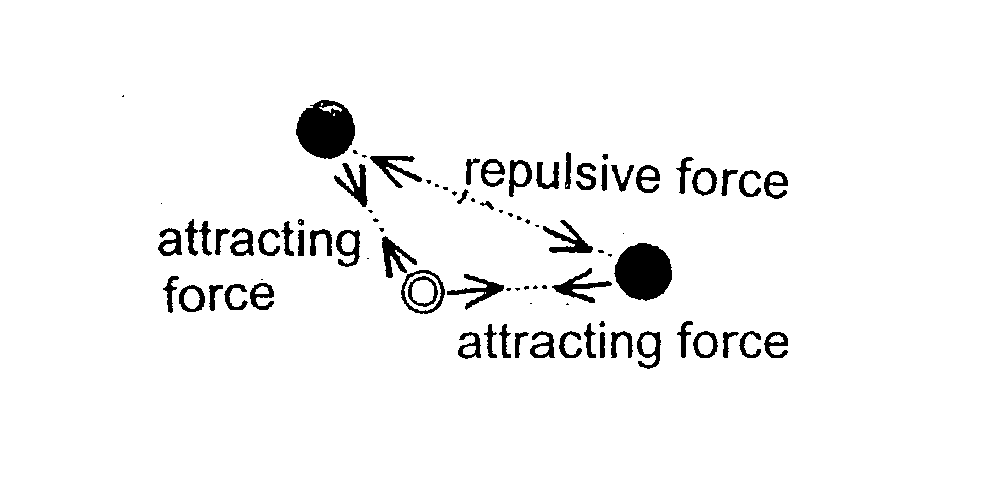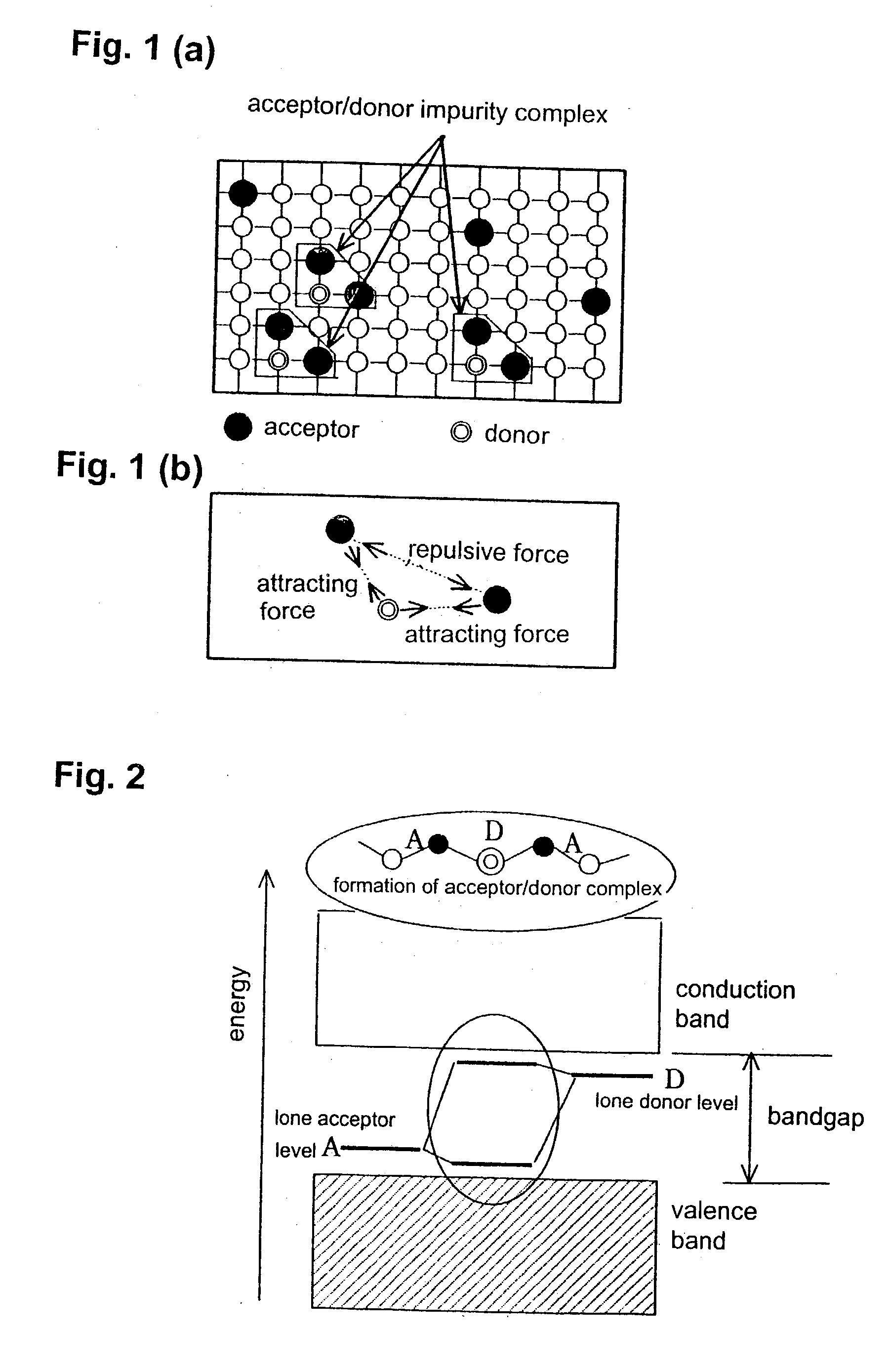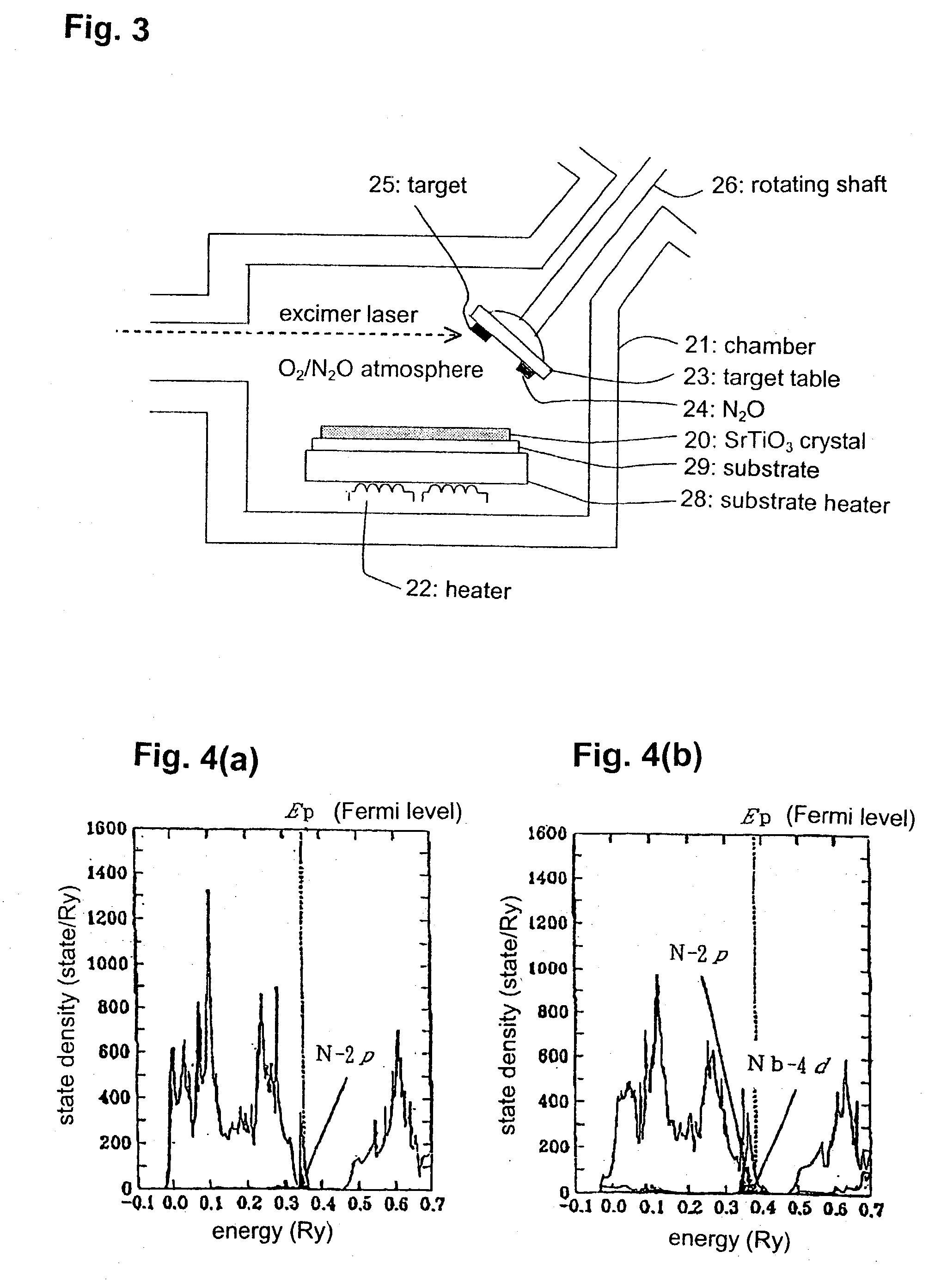Method for preparing low-resistant p-type srtio3
a p-type srtio.sub.3 and low-resistance technology, applied in the field of preparing low-resistance p-type srtio3., can solve the problems of obstructing the achievement of low-resistance p-type srtio.sub.3 and difficulty in preparing a p-type srtio.sub.3 having a desirably lowered
- Summary
- Abstract
- Description
- Claims
- Application Information
AI Technical Summary
Benefits of technology
Problems solved by technology
Method used
Image
Examples
first example
[0027] Crystal Growth Through MBE Method
[0028] FIG. 3 is a schematic vertical sectional view of a laser-MBE crystal-growth apparatus used in this example. A substrate 29 made of Si was housed in a chamber 21 with placing on a substrate heater 28 heated by a heater 22. A target 25 formed by sintering Sr oxide / Ti oxide in the form of a pellet was fixedly disposed on a target table 23 fixed to the end of a rotating shaft 26 to be rotated by a rotational drive unit outside the chamber 21. A N.sub.2O 24 as a dopant was fixedly disposed at a N.sub.2O gas source position of the target table 23. A excimer laser was irradiated from the outside of the chamber 21 onto the target 25 and the N.sub.2O 24 to introduce abrasion in them, and an n-type dopant of metal Nb (Nb oxide was used as the target) and a p-type dopant of N was co-doped at a ration of 1:2 while crystal-growing SrTiO.sub.3 on the substrate 29 under oxygen / N.sub.2O atmosphere.
[0029] In order to check up on the effect of the co-dop...
second example
[0032] Crystal Growth Through CVD Method
[0033] FIG. 5 is a schematic vertical sectional view of a CVD crystal-growth apparatus used in this example. Based on the CVD method, organic metal complexes of Sr, Ti and Nb, i.e. Sr (DPM).sub.2, Ti (DPM).sub.3 and Nb (DPM).sub.4 (DPM: dipivaloymethanato), were reserved in vessels 11, 12 and 13, respectively, and used as starting materials.
[0034] Ammonia was used as a starting material of N. Each of the starting materials was discharged from the corresponding vessel by introducing rare gas from a gas inlet 3 into each of the vessels. The starting materials were heated up to a high temperature at a vaporizing chamber 2, and forcibly vaporized. The vapor of the starting materials was introduced in a chamber heated by a heater 7, and directed toward a substrate 9 through a gas nozzle 6 to grow a SrTiO.sub.3 crystal 10 on the substrate 9 heated by a substrate heater 8. During this process, oxygen gas was introduced from a gas inlet 4 into the cha...
PUM
| Property | Measurement | Unit |
|---|---|---|
| Temperature | aaaaa | aaaaa |
| Temperature | aaaaa | aaaaa |
| Temperature | aaaaa | aaaaa |
Abstract
Description
Claims
Application Information
 Login to View More
Login to View More - R&D
- Intellectual Property
- Life Sciences
- Materials
- Tech Scout
- Unparalleled Data Quality
- Higher Quality Content
- 60% Fewer Hallucinations
Browse by: Latest US Patents, China's latest patents, Technical Efficacy Thesaurus, Application Domain, Technology Topic, Popular Technical Reports.
© 2025 PatSnap. All rights reserved.Legal|Privacy policy|Modern Slavery Act Transparency Statement|Sitemap|About US| Contact US: help@patsnap.com



